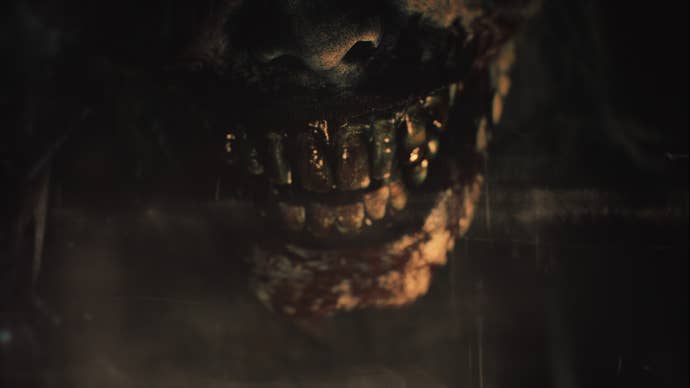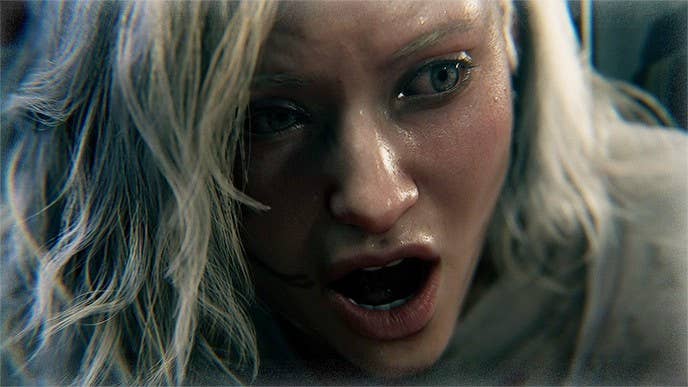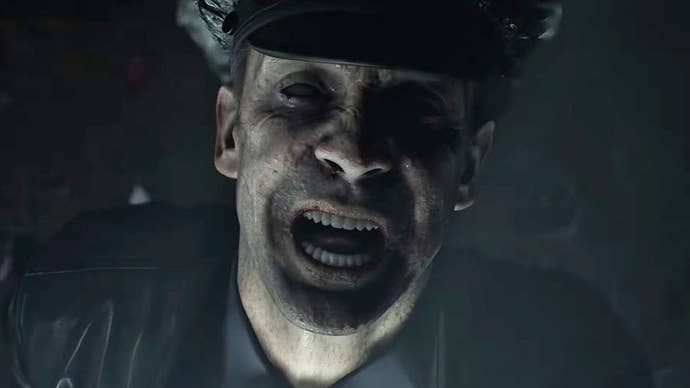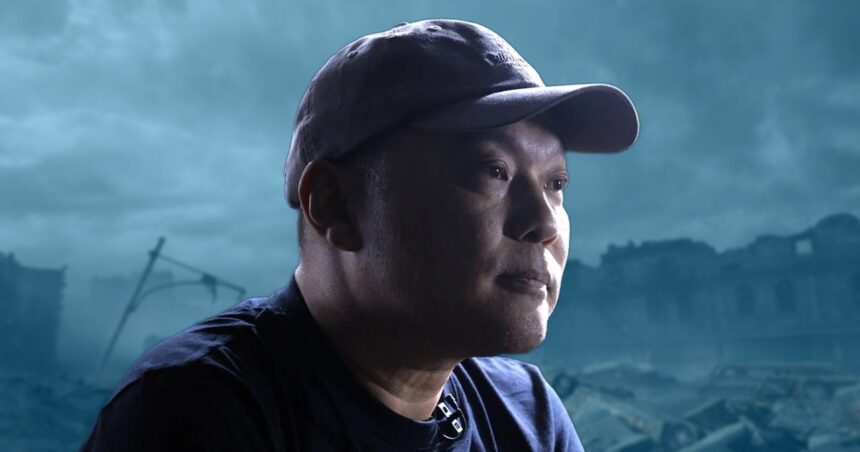Resident Evil 9: Requiem’s director wants you to know that it may very well be the most extreme title in the series. But not in the way you might think. When he talks of extremities Kōshi Nakanishi isn’t talking about blood, guts, and gore – he’s talking about pacing. And your heart rate, for that matter.
For my money, Resident Evil 7: Biohazard is one of the finest-paced video games around. I’ve written about my admiration for the curve of RE7’s gameplay and narrative before. The way in which protagonist Ethan Winters claws his way from scared and alone to practically Rambo-esque in the finale with the ultimate transition masked by an action-packed flashback is fantastic. A lot of horror games feature this curve, but few manage it as deftly as RE7. It’s real chef’s kiss stuff. One of the chefs in question was Nakanishi, who directed RE7 and is back in the director’s chair for Requiem. So naturally, sitting down to talk about his new game, I ask him about pacing.
To see this content please enable targeting cookies.
“My approach is the same this time,” Nakanishi notes after some modest hand-waving of my interpretation of RE7’s pacing. Requiem protagonist Grace will start off quite defenceless and certainly terrified. Spoilers mean Nakanishi offers no specifics, but he promises that Grace’s situation will change as the game progresses – something he sees as integral to the DNA of the Resident Evil series in general.
“There’s really this graph of tension and release throughout the game, building up to a climax. That’s something that I think Resident Evil is really unique with among horror games. We don’t just scare you – we offer you a chance to release that tension by overcoming it all.”
That curve of tension and release, drawing the player to the edge of sanity and then plunging them into a metaphorical cold bath, is indeed what this series has always done best. In the old days, that might’ve taken the form of simply slamming shut a safe room door where Nemesis couldn’t reach you. It’s a more nuanced design philosophy now – but the principle is the same. This time, Nakanishi believes his team has stretched that curve to its greatest extreme yet.

“We’re at the testing phase now in development as we gear up to the February release, and even as we play it internally, putting ourselves in the mindset of the players – I really feel that it’s going to be an incredible rollercoaster. They’re going to feel like that curve of tension to release is going to be… it’s perhaps the most extreme gap between those two axes. The points on that curve are going to be so far apart from each other that it’s going to be incredible.”
Much thought has gone into calibrating these extremes. In the first public Requiem demo we see the return of a Stalker-type enemy – a near invincible hulking beast that can only be fled. I was fine with that – but beneath the preview in which I gleefully articulated how the machinations of Nakanishi’s team had made me screech an expletive so loud it was heard by a colleague rooms away, one commenter sums up the potential pitfall of redeploying this design, asking: ‘This again?’
“It is a concern,” Nakanishi admits when I ask about potential player over-exposure and over-familiarity with the Stalker enemy mechanic. It has, after all, been used a lot by Capcom of late. RE7 had Jack Baker, the remakes had Nemesis and Mr. X, and Village’s Alcina Dimitrescu continued the trend. There’s an unnamed beast in Requiem that terrorizes poor Grace, pursuing her through the halls of a dilapidated hospital.
“It’s something we have to think about every time we have a new game with another stalker. We can’t have the players thinking ‘oh, there goes the stalker that I’ve come to expect’ – so this is something we’ve thought about in terms of approach.
“I think for this time… well, as usual, we’re pretty tight-lipped on the details at this stage. But… we want to give players a method to overcome the stalker enemy. What that entails is something that we’ll be getting into down the line, but I think that you’ll feel like you finally have a chance to turn the tables and deal with the stalker in a way that you haven’t been able to in past titles.”
There it is again, then: that ebb and flow. The terror, the tension, the release. Nakanishi describes this as Resident Evil’s signature, though the legibility of that signature undoubtedly varies from one game to the next. The original game has more tension; the action-heavier 4 is plainly more release-driven.
Part of the intent behind Requiem appears to be to draw both elements out further than before while also striking a more absolute balance. This, I would argue, makes it closer to the soft reboot seventh entry in the series – but in other ways its design could also be considered an answer to that game and some of its fran response.
“It’s possible that Resident Evil 7 almost went too far in the direction of completely betraying your expectations,” the director muses. “While it was a fresh start for the series, there’s always fans who say they wish it was more like the Resident Evil that they know and love.”
In this Requiem presents the opposite. Protagonist Grace Ashcroft is new, but her surname is a key clue: she is the daughter of Alyssa Ashcroft, last playable in a spin-off from two decades ago and probably only fully remembered by the most insatiable of lore nerds. In the demo, she wakes up in a side room of the Rhodes Hill Civic Care Center – a hospital connected to Racoon City, the classic series location we catch glimpses of in the trailers.
“The remakes featuring Raccoon City showed how much love there was for that setting. I had this feeling that as a sort of beloved starting point for the series, it’d be great to check in on it and see how it’s doing as a location,” Nakanishi explains.
“So when it was time to plan what the ninth title would be, it felt like a good time. 30 years later, both in the series timeline and the real-world timeline. What’s happening in Raccoon City, what’s going on there? The timing was right.”

It would be easy to see a decision to loop back to the past as a cynical play – but Capcom had no need to do such a thing. The Ethan Winters ‘duology’ of RE7 and Village was successful, even though it went to great pains to largely separate itself from the rest of the franchise. This perhaps drove Capcom’s decision to publicly show off some of its aborted experimentation of what the ninth Resident Evil game could be, including releasing footage of prototypes of a multiplayer co-op affair – in many ways, it is proof that Capcom is not just working from the book.
“We really wanted to get across to people how much we were challenging ourselves with this ninth mainline entry,” RE9 producer Masato Kumazawa says of the publisher’s surprising openness about cancelled versions of the game.
“We wanted to admit that we didn’t just arrive at the game that you see fully-formed – there was a period where we thought really hard about what the right way to go would be. Being honest about that, I think, showed that we really took seriously the responsibility of designing this game.
“It’s a constant point of discussion for us as a team. What is Resident Evil now? What should it be for the next game? What do the fans see it as? Revealing some of our thinking in that commentary video from earlier in the summer was just a way of us saying that, yes, we do look at what everybody is saying and it does have an impact on our process. Even if we ultimately decide the direction ourselves, it’s an input we pay attention to.”
Fan input has resulted in this path: a new-but-familiar protagonist, a return to beloved locations thirty years on, and a flick switch that takes you between the two distinct perspectives of modern Resident Evil – third or first-person, the choice is yours. To Nakanishi, returning to the past represents something fresh, especially after the detour of 7 and Village.
“We’ve had our different look at the series, and now going back to normal feels like a fresh new take,” he declares. “I think that in itself will be a refreshing surprise for players when they play the game, and hopefully they’ll see that this is staying a little closer to the idea of what they think that a Resident Evil game should be, keeping those hardcore fans happy.”

All of this lines up, I think, with the placement of Resident Evil 9: Requiem as an anniversary release. Coming full circle is the norm for milestone celebrations after all. March 22nd next year is the 30th anniversary of the franchise debut, under a month after Requiem’s release. Nakanishi corrects me on this, however.
“I actually kind of wish we could have released it a bit earlier than that,” Nakanishi laughs. As it happens, the anniversary status of Requiem is a happy accident.
“It was always going to be continuing the DNA of the series while trying to keep things fresh,” adds Kumazawa. “You want to have the things that the fans expect in a Resident Evil game, of course. So, yes, we just sort of landed on the anniversary over the course of the development period, but hopefully it still feels like a fitting tribute to where the series has come from.”





